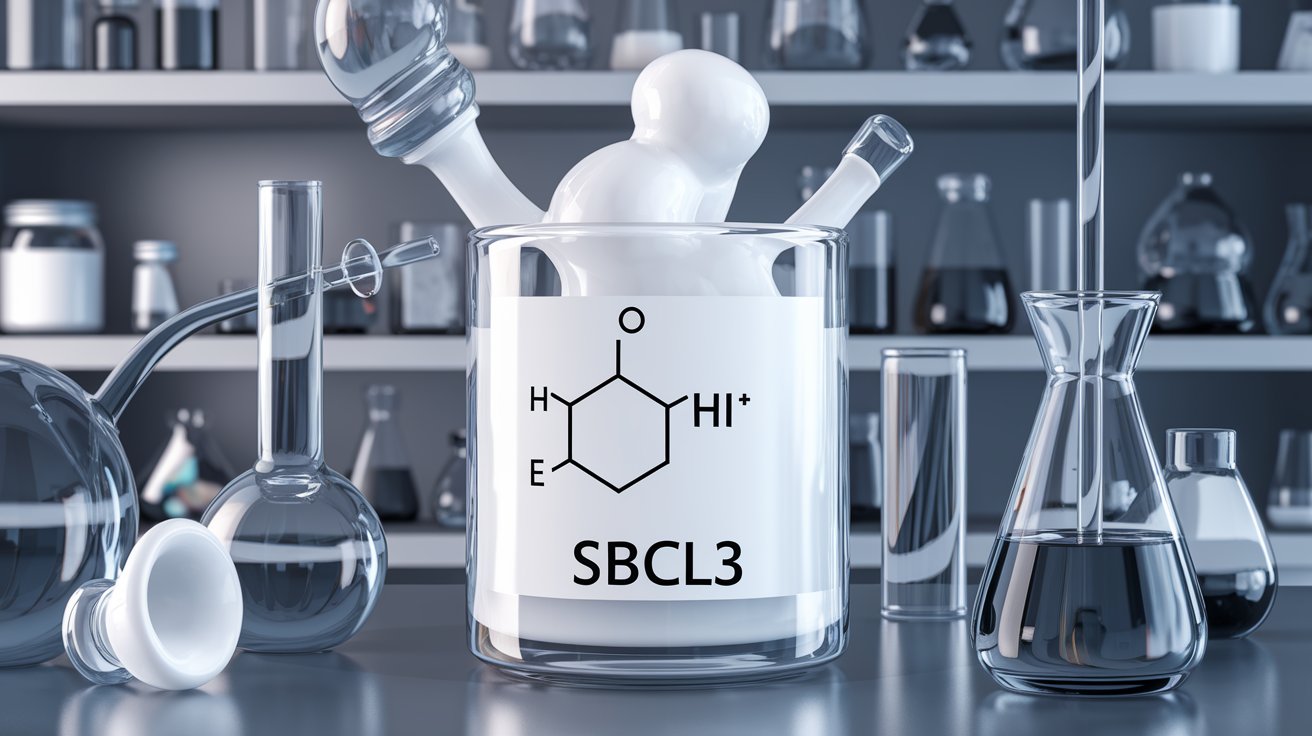
Antimony(III) chloride, also known as antimony trichloride, is a fascinating chemical compound with a rich history and diverse applications. This compound, with the formula SbCl3, has been used since ancient times, notably in cosmetics and medicine. Today, it finds its place in various industries, from pharmaceuticals to flame retardants. Antimony trichloride appears as a colorless or white crystalline solid, often referred to as butter of antimony due to its buttery consistency when melted. Its unique properties make it a valuable reagent in organic synthesis and a catalyst in polymerization processes. Whether you're a chemistry enthusiast or just curious about the elements around us, these 30 facts about antimony(III) chloride will surely pique your interest and broaden your understanding of this intriguing compound.
Key Takeaways:
- Antimony(III) chloride, also known as antimony trichloride, has a rich history and diverse uses, from ancient cosmetics to modern industrial applications. It's important to handle it with caution due to its toxic nature.
- This compound has unique chemical properties and is used in textiles, pharmaceuticals, flame retardants, glass manufacturing, and chemical synthesis. However, its disposal requires careful consideration to prevent environmental impact.
What is Antimony(III) Chloride?
Antimony(III) chloride, also known as antimony trichloride, is a chemical compound with the formula SbCl3. This compound has a variety of uses in different industries, from pharmaceuticals to textiles. Let's dive into some fascinating facts about this intriguing substance.
-
Chemical Formula: The chemical formula for antimony(III) chloride is SbCl3.
-
Appearance: It appears as a colorless, crystalline solid that can sometimes have a yellowish tint.
-
Molecular Weight: The molecular weight of antimony(III) chloride is approximately 228.11 g/mol.
-
Melting Point: It has a melting point of 73.4°C (164.1°F).
-
Boiling Point: The boiling point of antimony(III) chloride is 223°C (433.4°F).
Historical Background
Antimony(III) chloride has been known and used for centuries. Its history is rich and varied, reflecting its diverse applications.
-
Ancient Use: Ancient Egyptians used antimony compounds in cosmetics, particularly in kohl eyeliner.
-
Alchemy: Alchemists in the Middle Ages experimented with antimony chloride, believing it had mystical properties.
-
Discovery: The compound was first described in the 15th century by the German alchemist Basil Valentine.
-
Medicinal Use: In the 17th century, it was used in medicine, although its toxicity limited its applications.
Chemical Properties
Understanding the chemical properties of antimony(III) chloride helps in comprehending its behavior in various reactions.
-
Hydrolysis: It hydrolyzes in water to form hydrochloric acid and antimony oxychloride.
-
Reactivity: Antimony(III) chloride reacts with alcohols to form antimony alkoxides.
-
Oxidation State: The antimony in SbCl3 is in the +3 oxidation state.
-
Lewis Acid: It acts as a Lewis acid, meaning it can accept electron pairs from Lewis bases.
Industrial Applications
Antimony(III) chloride is used in several industries due to its unique properties.
-
Textile Industry: It is used as a mordant in dyeing processes.
-
Pharmaceuticals: Some medications use antimony(III) chloride as an intermediate.
-
Flame Retardants: It is a component in the production of flame retardant materials.
-
Glass Manufacturing: It helps in the production of specialty glasses.
-
Chemical Synthesis: Used as a catalyst in organic synthesis reactions.
Safety and Handling
Handling antimony(III) chloride requires caution due to its toxic nature.
-
Toxicity: It is toxic if ingested, inhaled, or comes into contact with skin.
-
Protective Gear: Always use gloves, goggles, and protective clothing when handling it.
-
Storage: Store in a cool, dry place away from moisture and incompatible substances.
-
First Aid: In case of contact, rinse immediately with plenty of water and seek medical attention.
Environmental Impact
The environmental impact of antimony(III) chloride is a concern, especially regarding its disposal.
-
Water Contamination: Improper disposal can lead to water contamination.
-
Soil Pollution: It can also contaminate soil, affecting plant and animal life.
-
Regulations: Many countries have strict regulations on the disposal of antimony compounds.
Fun Facts
Here are some interesting tidbits about antimony(III) chloride that might surprise you.
-
Color Change: It changes color when exposed to air due to the formation of antimony oxychloride.
-
Historical Names: Historically known as "butter of antimony" due to its buttery consistency.
-
Crystal Structure: It forms a monoclinic crystal structure.
-
Solubility: Soluble in organic solvents like ethanol and chloroform.
-
Antimony Mirror: When heated, it can form a mirror-like coating of antimony metal.
Fascinating World of Antimony(III) Chloride
Antimony(III) chloride, with its unique properties and uses, stands out in the world of chemistry. From its role in creating flame retardants to its historical use in ancient cosmetics, this compound has a rich and varied history. Its ability to react with water and its use in organic synthesis make it a valuable tool for scientists and industries alike. Understanding these facts not only highlights the importance of antimony(III) chloride but also showcases the incredible versatility of chemical compounds. Whether you're a student, a professional, or just someone curious about the world around you, knowing these facts can deepen your appreciation for the wonders of chemistry. Keep exploring, stay curious, and remember, there's always more to learn about the elements that make up our world.
Frequently Asked Questions
Was this page helpful?
Our commitment to delivering trustworthy and engaging content is at the heart of what we do. Each fact on our site is contributed by real users like you, bringing a wealth of diverse insights and information. To ensure the highest standards of accuracy and reliability, our dedicated editors meticulously review each submission. This process guarantees that the facts we share are not only fascinating but also credible. Trust in our commitment to quality and authenticity as you explore and learn with us.
